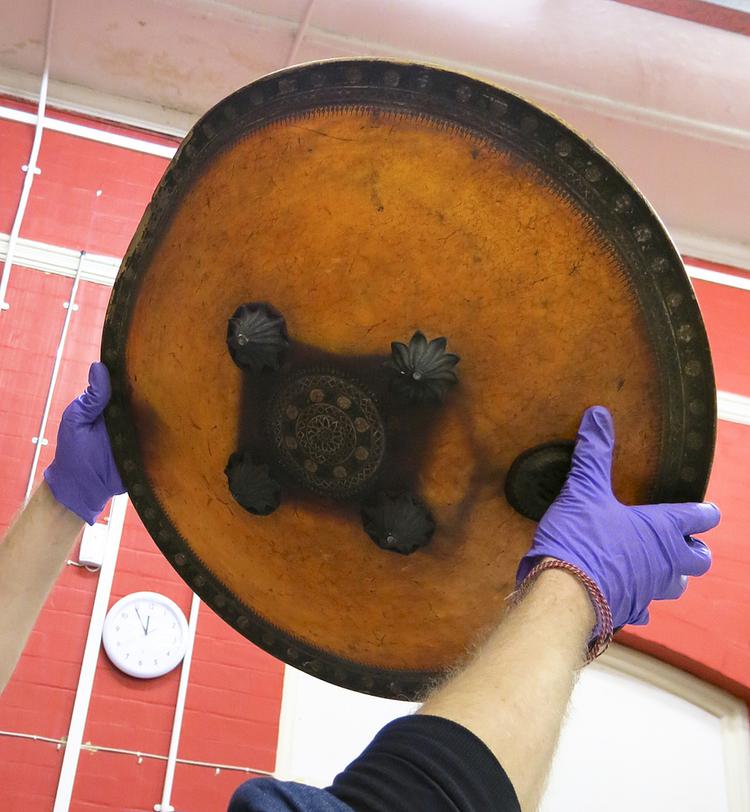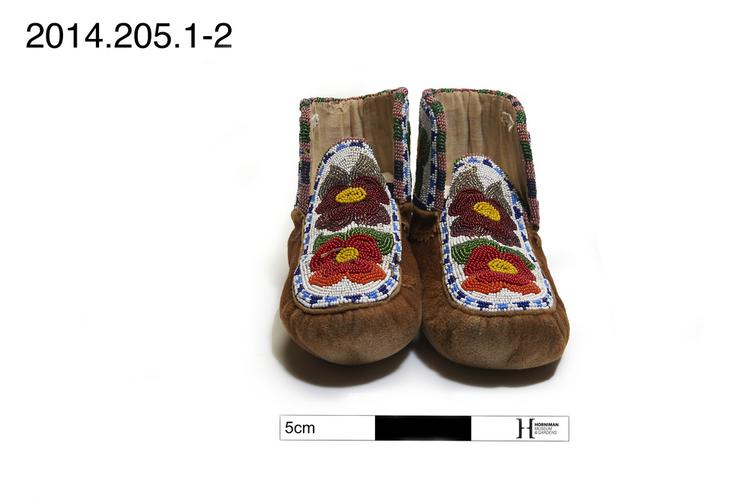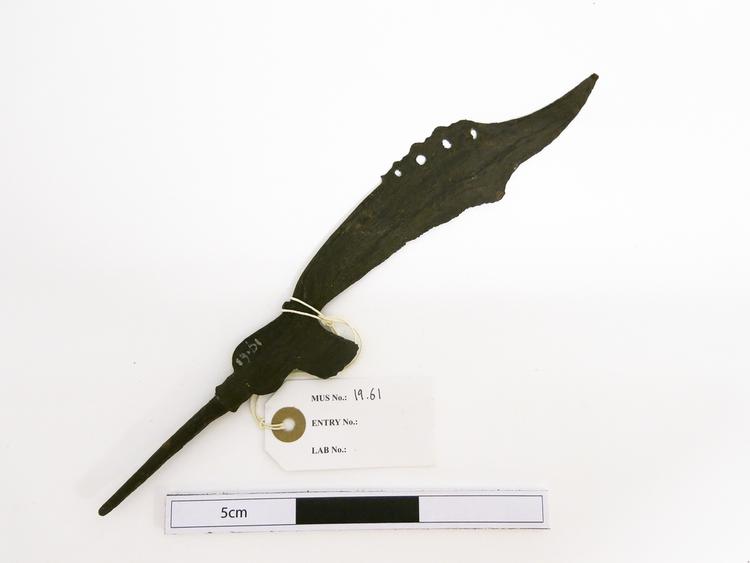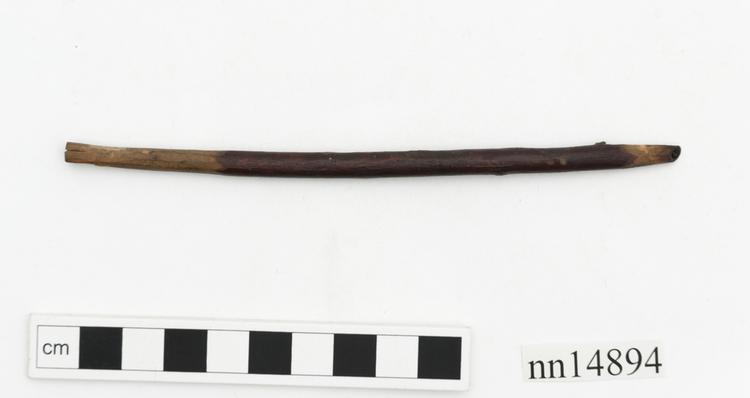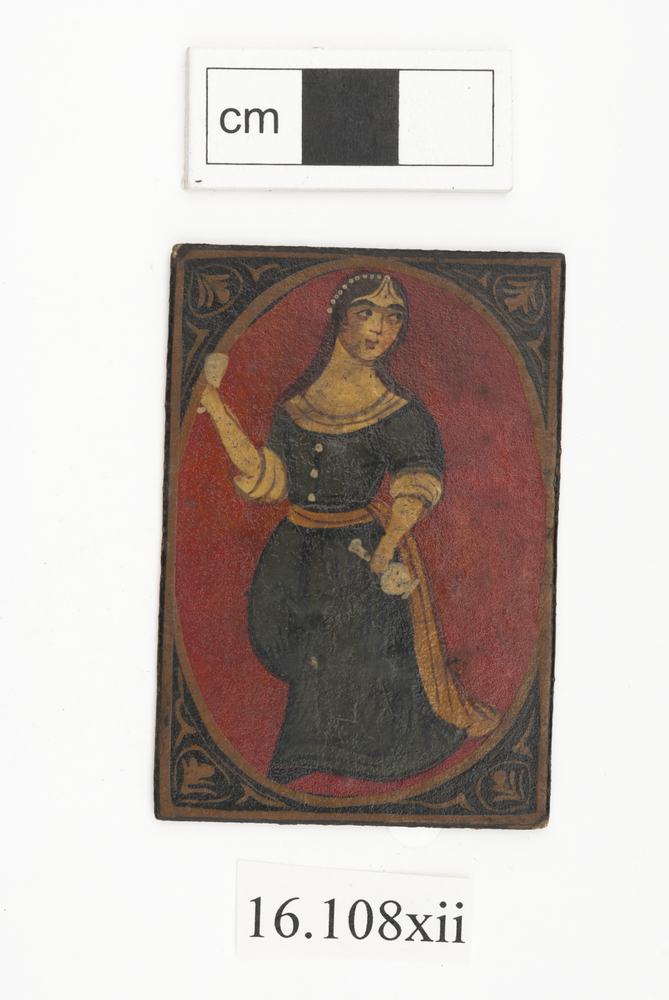
One of a set of 12 lacquered paper ās playing cards from Persia. This card (the lakkāt or harlot) depicts a standing female figure holding a bottle and glass in either hand.
This card is part of a set which could be used for playing ās, a game which became popular in Iran during the Qajar dynasty (1785 to 1925). Ās replaced ganjafa, which was the card game associated with the Safavid dynasty. Cards used for playing ās are distinguished from each other by five ground colors. They are ranked as follows starting with the highest: black: Ās (the Ace); green: Šāh (the Shah); yellow: Bibi (the Queen); golden yellow: Sarbāz (the Jack); and red: Lakkāt ( the Harlot, the lowest in value). The faces of the Horniman cards (16.108i-xii) are decorated in a style typical for ās cards: images are framed by medallions with foliate decoration in the corners. The ās is represented by a lion fighting a dragon. The šāh is seated on a chair, in the costume of a fashionable young man in the nineteenth century. The bibi is also shown seated with an infant on her knees. The sarbāz is represented by a man in European dress with a walking stick. The style of the dress suggests a date in the first half of the nineteenth century. The lowest suit, the lakkāt, is represented by a lady with a bottle and a glass, a composition which has a long history in Persian painting and tile decoration, starting early in the Safavid era during the seventeenth century. The Encyclopaedia Iranica tells us that: “The rules [of ās] are similar to those of American poker but there is no flush, straight flush, colour and straight. Moreover it is not possible to exchange cards because a pack is composed of 25 cards only, with five suits. Normally five persons play, each one receiving five cards. The highest hand is panj-sar, which means a player has five cards of one suit. Should more than one player who placed his stakes have a suit, the one whose suit has the higher value wins the game, i.e. the suit of ās precedes that of Shahs etc. The next highest hand is čāhār-sar, which means holding four cards of one suit. It is followed by se-opas, i.e. three cards of one suit and two of another. This is followed by se-sar, i.e. three cards of a suit and two cards of different suits. Then do-pas follows for which the player needs two cards of two suits each. The lowest hand is do-sar, i.e. two cards of one suit. Bluffing is a main feature of this game.” (Roschanzamir, M, 2011).



